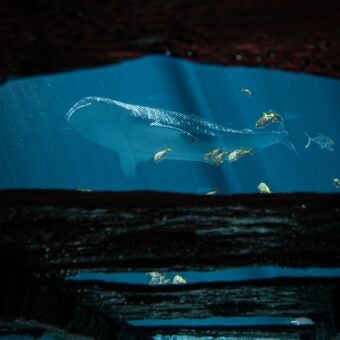-
Size
2 inches (5 cm) -
Diet
Insects, worms, other small invertebrates -
Range
Malaysia, thailand, singapore -
Habitat
Peat swamps, forest pools, streams with lots of cover and plant matter
Physical Characteristics
- Body coloration is a shiny red-orange, marked by a distinctive black triangle that begins just below the dorsal fin and trails along that caudal peduncle.
- Occasionally displays a small dark streak behind the operculum.
- The eyes are very large and round.
- Harlequin rasbora can grow to 2 inches (5 cm) in length.
Animal Fact
The female harlequin rasbora is often larger and rounder than the male.
Diet / Feeding
- Diet consists of insects, worms and other small invertebrates.
Range / Habitat
- The harlequin rasbora occurs in freshwater habitats of Malaysia, Thailand and Singapore.
- Found in peat swamps and forest pools and streams with lots of cover and plant matter. Decomposing plants add tannins to the water, creating an acidic blackwater environment.
Reproduction & Growth
- Oviparous (egg-laying species).
- The female harlequin rasbora is often larger and rounder than the male.
- Spawning usually takes place under plant cover; eggs will adhere to the undersides of large leaves.
Conservation Status
- “Least Concern” on the IUCN Red List.
Additional Information
- Habitat loss and run-off due to agriculture is the main threat to population in the native habitat.
- A schooling species.
- A peaceful, popular aquarium fish.
- Previously thought to be a member of the Rasbora genus, harlequin rasbora was renamed Trigonostigma heteromorpha.






